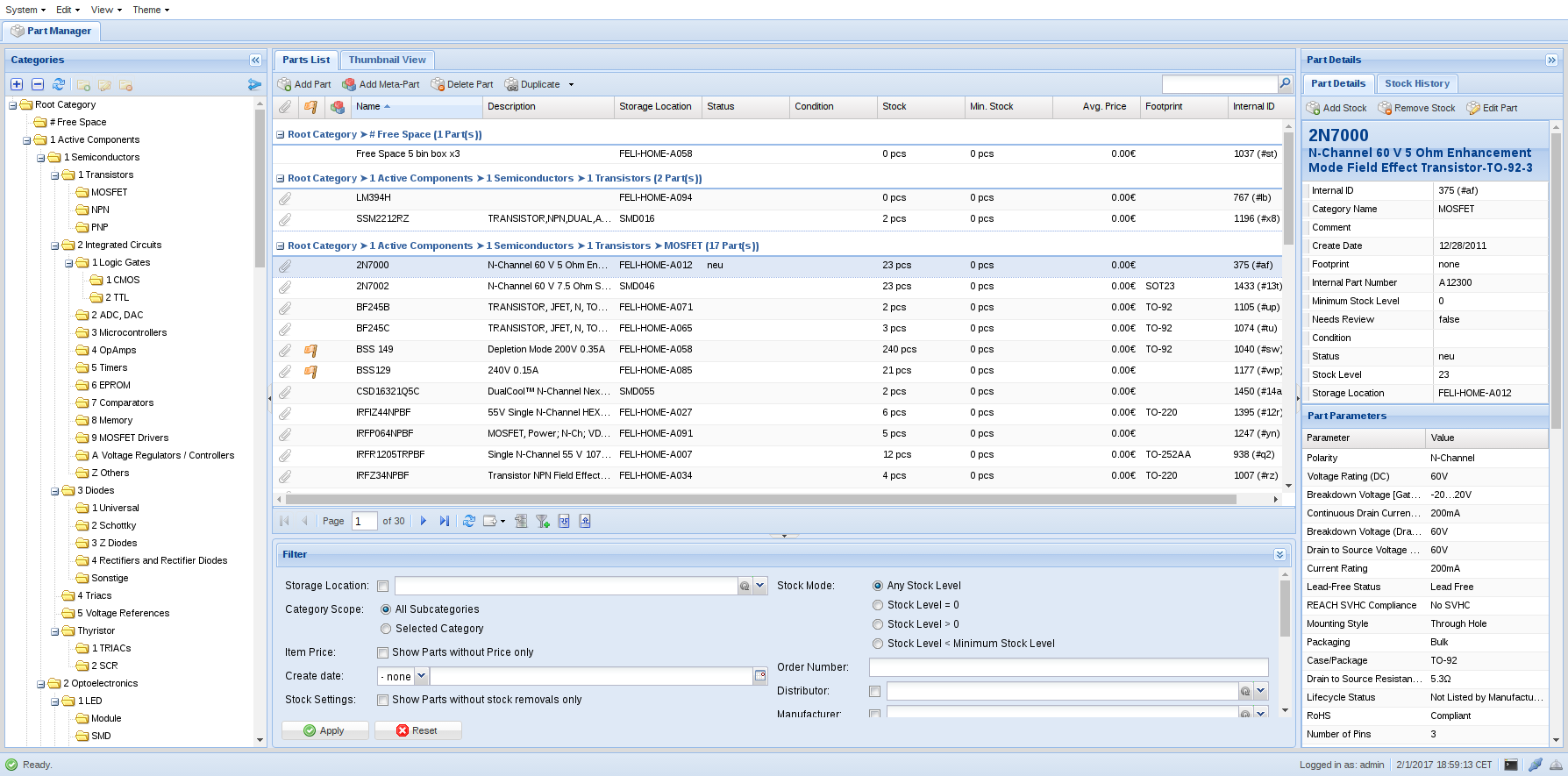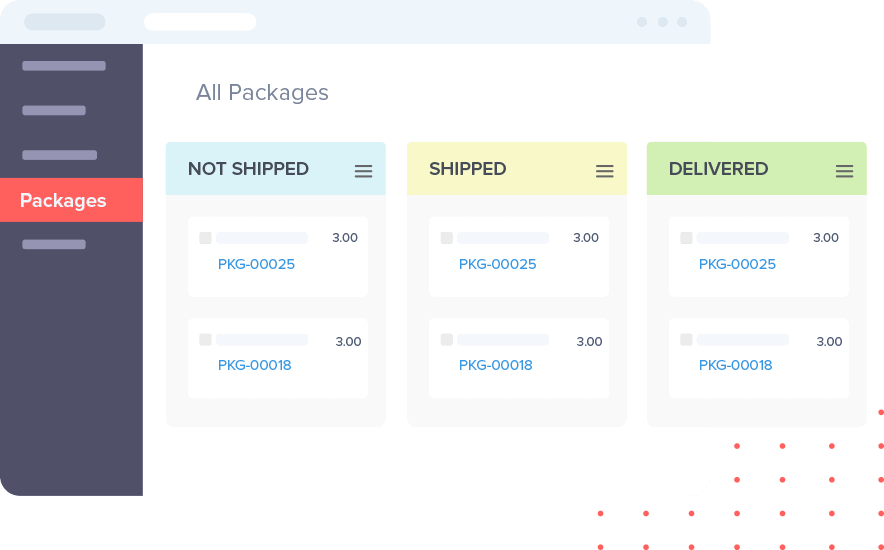Delving into the realm of business inventory programs, we embark on a journey to uncover the transformative power they hold for businesses seeking to streamline their operations, minimize costs, and maximize efficiency. These programs serve as indispensable tools, empowering organizations to gain real-time visibility into their inventory levels, optimize stock replenishment, and make data-driven decisions that drive growth and profitability.
From comprehensive inventory management systems to specialized solutions tailored to specific industries, the landscape of business inventory programs is vast and ever-evolving. By exploring the key features, benefits, and best practices associated with these programs, we aim to provide businesses with the insights they need to harness their full potential and unlock the path to inventory management excellence.
Business Inventory Programs Overview
Business inventory programs are software applications designed to help businesses track and manage their inventory. They provide a centralized platform for businesses to record, monitor, and control their stock levels, ensuring that they have the right products in the right quantities at the right time.
Using business inventory programs offers several benefits, including:
- Improved accuracy and efficiency in inventory management
- Reduced inventory costs and waste
- Enhanced customer satisfaction through improved product availability
- Better forecasting and planning capabilities
There are different types of business inventory programs available, each tailored to specific business needs and industries. Some common types include:
- Perpetual inventory systems: These systems continuously update inventory records as transactions occur, providing real-time visibility into stock levels.
- Periodic inventory systems: These systems update inventory records at specific intervals, such as monthly or quarterly, and provide a snapshot of stock levels at those points in time.
- Just-in-time (JIT) inventory systems: These systems aim to minimize inventory levels by only ordering products when they are needed, reducing storage costs and waste.
Features of Business Inventory Programs

Business inventory programs offer a range of features designed to help businesses manage their inventory effectively. These features can vary depending on the specific program and the industry in which it is used.
Key features of business inventory programs include:
- Inventory tracking:Allows businesses to track the quantity, location, and movement of inventory items in real time.
- Stock level management:Helps businesses maintain optimal stock levels to avoid overstocking or understocking.
- Purchase order management:Automates the process of creating and managing purchase orders, ensuring that businesses have the necessary inventory when needed.
- Warehouse management:Provides tools for managing warehouse operations, including inventory storage, picking, and packing.
- Reporting and analytics:Generates reports and provides analytics to help businesses make informed decisions about inventory management.
The features of different business inventory programs can vary significantly. Some programs may offer more advanced features, such as:
- Demand forecasting:Uses historical data to predict future demand for inventory items.
- Inventory optimization:Recommends optimal inventory levels based on demand and other factors.
- Multi-location inventory management:Allows businesses to manage inventory across multiple warehouses or locations.
- Integration with other systems:Connects with other business systems, such as accounting and CRM software, to streamline inventory management processes.
Businesses can use the features of inventory programs to improve their inventory management practices in a number of ways, including:
- Reducing inventory costs:By optimizing inventory levels, businesses can reduce the cost of holding excess inventory.
- Improving customer service:By ensuring that inventory is available when needed, businesses can improve customer satisfaction.
- Increasing efficiency:By automating inventory management tasks, businesses can save time and improve efficiency.
- Making better decisions:By providing data and analytics, inventory programs can help businesses make better decisions about inventory management.
Benefits of Using Business Inventory Programs

Business inventory programs offer a range of advantages that can significantly enhance inventory management and streamline business operations. These programs provide real-time visibility into inventory levels, automate inventory tracking, and enable businesses to optimize stock levels, reducing costs and improving efficiency.
Quantifying the benefits of using business inventory programs demonstrates their tangible impact on business performance. Studies have shown that businesses using inventory programs can:
- Reduce inventory holding costs by up to 30% by optimizing stock levels and eliminating overstocking.
- Improve inventory accuracy by up to 95%, reducing errors and ensuring that businesses have the right products in stock at the right time.
- Increase sales by up to 10% by preventing stockouts and ensuring that customers can always find the products they need.
- Enhance customer satisfaction by up to 20% by providing accurate and up-to-date inventory information, leading to fewer order cancellations and delays.
Maximizing the Benefits of Inventory Programs
To maximize the benefits of using business inventory programs, businesses should:
- Choose a program that is tailored to their specific industry and business needs.
- Implement the program effectively and train staff on its use.
- Regularly monitor and analyze inventory data to identify areas for improvement.
- Integrate the inventory program with other business systems, such as accounting and sales, to streamline operations.
- Use the program to generate reports and insights that help make informed decisions about inventory management.
Challenges of Implementing Business Inventory Programs

Implementing business inventory programs can pose challenges for organizations. These challenges include data accuracy, integration with other systems, and employee resistance.
To overcome the challenge of data accuracy, businesses can implement rigorous data entry procedures, conduct regular audits, and use data validation tools.
Integration with other systems, such as accounting and customer relationship management (CRM) systems, can be complex and time-consuming. To overcome this challenge, businesses can use integration platforms or work with vendors that offer pre-built integrations.
Employee resistance to change can also be a challenge. To overcome this challenge, businesses can communicate the benefits of the inventory program to employees, provide training, and involve employees in the implementation process.
Case Studies
- Company A, a large retailer, implemented a business inventory program that resulted in a 15% reduction in inventory shrinkage.
- Company B, a manufacturer, implemented a business inventory program that resulted in a 10% increase in inventory turnover.
Best Practices for Using Business Inventory Programs

Establishing best practices for using business inventory programs is crucial for optimizing inventory management and maximizing its benefits. By following these guidelines, businesses can ensure efficient and effective inventory management, leading to improved operational performance and increased profitability.
To create a checklist of best practices for using inventory programs, consider the following steps:
- Establish clear inventory management goals:Define the specific objectives and desired outcomes of using an inventory program, such as reducing inventory costs, improving inventory accuracy, or enhancing customer service.
- Select the right inventory program:Evaluate different inventory programs based on their features, functionality, ease of use, and compatibility with your business needs.
- Implement the inventory program effectively:Train staff on how to use the program, establish clear procedures for inventory tracking and management, and integrate the program with other business systems.
- Regularly review and update inventory data:Ensure that inventory records are accurate and up-to-date by conducting regular inventory audits and making necessary adjustments.
- Use inventory reports and analytics:Leverage the reporting and analytics capabilities of the inventory program to gain insights into inventory performance, identify trends, and make informed decisions.
- Continuously improve inventory management processes:Regularly evaluate the effectiveness of your inventory management practices and make adjustments as needed to optimize performance.
Future of Business Inventory Programs
The future of business inventory programs is bright. As businesses continue to adopt digital technologies, the demand for inventory management solutions will only grow.
One of the most important trends in business inventory programs is the increasing use of artificial intelligence (AI). AI can be used to automate many of the tasks associated with inventory management, such as tracking inventory levels, forecasting demand, and generating purchase orders.
This can free up business owners and managers to focus on other tasks, such as growing their business.
Another trend in business inventory programs is the increasing use of cloud-based solutions. Cloud-based solutions offer a number of advantages over on-premises solutions, such as scalability, flexibility, and cost-effectiveness.
Integration with Other Business Systems
In the future, business inventory programs will become even more integrated with other business systems, such as accounting software, customer relationship management (CRM) software, and enterprise resource planning (ERP) software. This integration will allow businesses to have a complete view of their inventory and how it is being used.
Real-Time Tracking
Business inventory programs will also become more sophisticated in their ability to track inventory in real time. This will allow businesses to have a more accurate picture of their inventory levels and make better decisions about how to manage their inventory.
Predictive Analytics, Business inventory programs
Business inventory programs will also use predictive analytics to help businesses forecast demand and make better decisions about how to manage their inventory. This will help businesses to avoid overstocking or understocking, which can lead to lost sales or increased costs.
Last Point

As we conclude our exploration of business inventory programs, it becomes evident that they are not mere software solutions but rather strategic assets that can revolutionize the way businesses manage their inventory. By embracing the transformative power of these programs, organizations can unlock a wealth of benefits, including reduced costs, improved customer satisfaction, and enhanced operational efficiency.
The future of business inventory programs holds even greater promise, with emerging technologies and innovative approaches poised to further streamline inventory management and drive business success.
Top FAQs
What are the key benefits of using business inventory programs?
Business inventory programs offer a multitude of benefits, including improved inventory accuracy, reduced stockouts, optimized purchasing decisions, enhanced customer satisfaction, and increased profitability.
How do business inventory programs help businesses overcome inventory management challenges?
Inventory programs provide businesses with real-time visibility into their inventory levels, enabling them to identify and address stock discrepancies, prevent overstocking and understocking, and optimize their supply chain.
What are some best practices for using business inventory programs?
To maximize the benefits of business inventory programs, it is essential to establish clear inventory policies, train staff on proper inventory management techniques, and regularly review and adjust inventory levels based on demand patterns.